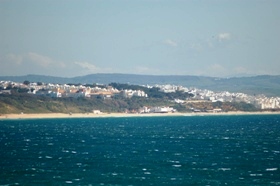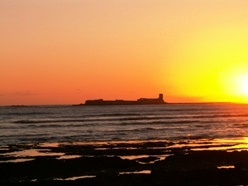Andalusia - the land of the sun - is one of the most diverse provinces in the south-west of Spain. The landscape ranges from sandy unspoilt beaches, green pastured fields with grazing bulls, snow-capped mountains in the Sierra Nevada, natural parks with cork trees in Alcornocales, pine forests and olive groves to the well designed golf courses of Novo Sancti Petri.
|
 |
The Costa de la Luz (Coast of Light) is one of the most beautiful regions at the Atlantic coast, not destroyed by the mass tourism as many other areas, stretching from the border with Portugal to its southernmost point at Gibraltar. The proximity to Africa and the warm Gulf Stream determine the climate. With over 3,200 hours of sunshine a year, the Costa de la Luz has the sunshine record in Spain. Even the winters are mild with temperatures around 20 °. |
Chiclana de la Frontera, a grown town with originally backgroun Off the coast of Chiclana lays the island of Sancti Petri with the famous Temple of Hercules, built by the Phoenicians. On top of its ruins, in the XIII century, the lighthouse and the castle of Sancti-Petri were built.
|




 ds from agriculture and fishing, is located on the Atlantic coast of Cadiz and the wine route, well known for its good wine (Fino de Chiclana) and its healing water (Sources of Fuente Armaga). The structure of the town, its narrow streets and alleyways with flower-filled courtyards and its architecture are typical for Andalusia.
ds from agriculture and fishing, is located on the Atlantic coast of Cadiz and the wine route, well known for its good wine (Fino de Chiclana) and its healing water (Sources of Fuente Armaga). The structure of the town, its narrow streets and alleyways with flower-filled courtyards and its architecture are typical for Andalusia.